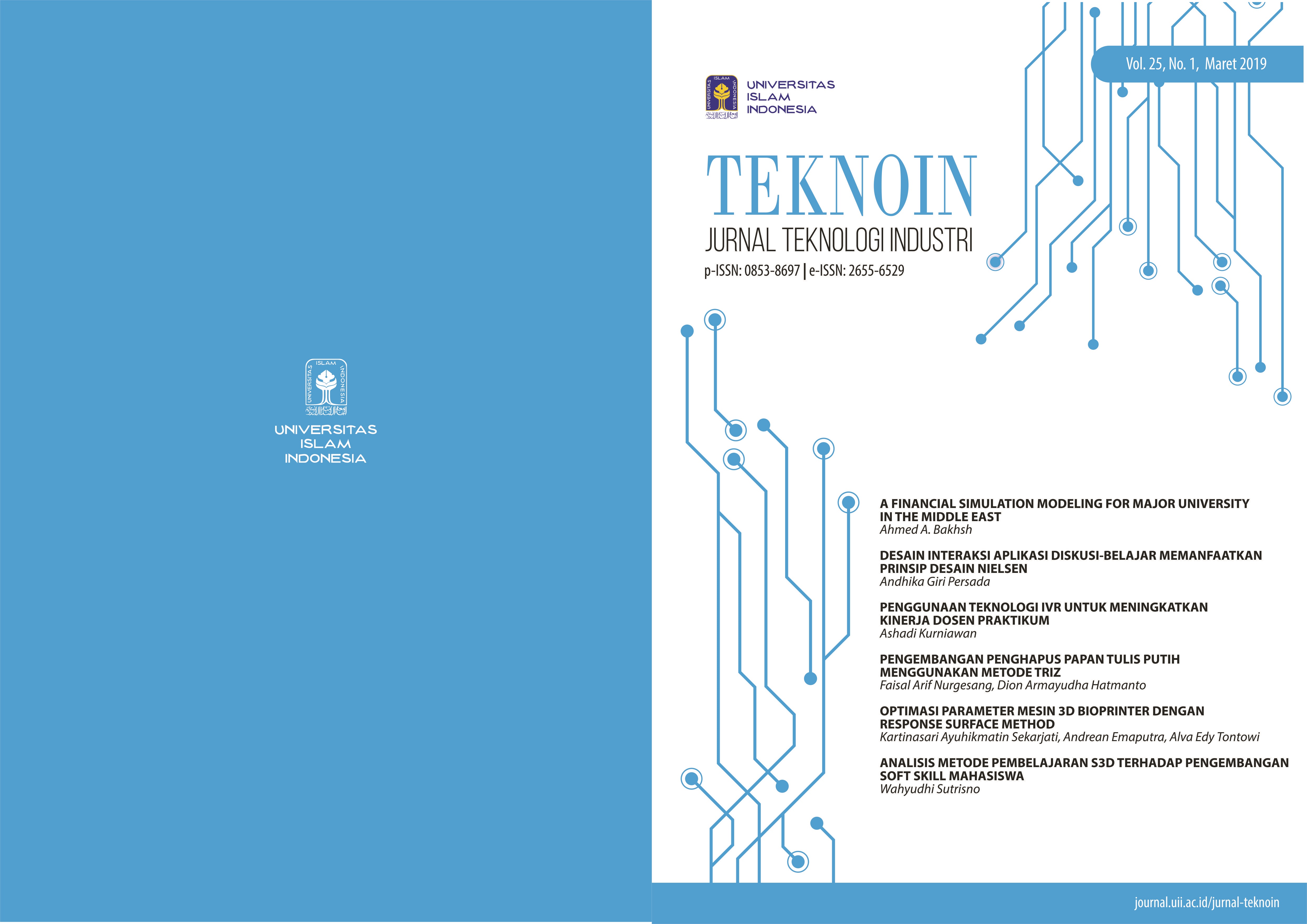Main Article Content
Abstract
In Faculty of Industrial Technology Islamic University of Indonesia, whiteboards are used as a medium of learning in the classroom. Generally, instructors use non-permanent markers to make it easy to clean with an eraser. The problem that occurs is if this eraser is often used, the ability will decrease. This is caused by the large amount of ink markers that have been attached to the eraser cloth so that some ink that can not stick in the form of fine grains eventually falls and collects in the dirt container. These fine grains can contaminate clothes, hands, and other body parts. In addition, there are remnants of ink markers on the board that can hinder to write the next material. But to overcome this, there is a contradiction that is if an eraser is often used, the ability will decrease. To eliminate this contradiction, a systematic method of problem solving was used, namely TRIZ method. This method helps to provide solutions through the principle of preliminary action. This principle was realized by adding a spray mechanism that is used just before the erasing process is carried out. Testing the ability of the eraser was done on a whiteboard with ink markers with the size of 50 x 50 cm. The results show that the new eraser that has been developed is able to bind more ink markers and can completely erase so that it can write the next material clearly.
Keywords
Article Details
Authors who publish with this journal agree to the following terms:
- Authors retain copyright and grant the journal right of first publication with the work simultaneously licensed under a Creative Commons Attribution License that allows others to share the work with an acknowledgement of the work's authorship and initial publication in this journal.
- Authors are able to enter into separate, additional contractual arrangements for the non-exclusive distribution of the journal's published version of the work (e.g., post it to an institutional repository or publish it in a book), with an acknowledgement of its initial publication in this journal.
- Authors are permitted and encouraged to post their work online (e.g., in institutional repositories or on their website) prior to and during the submission process, as it can lead to productive exchanges, as well as earlier and greater citation of published work (See The Effect of Open Access).
